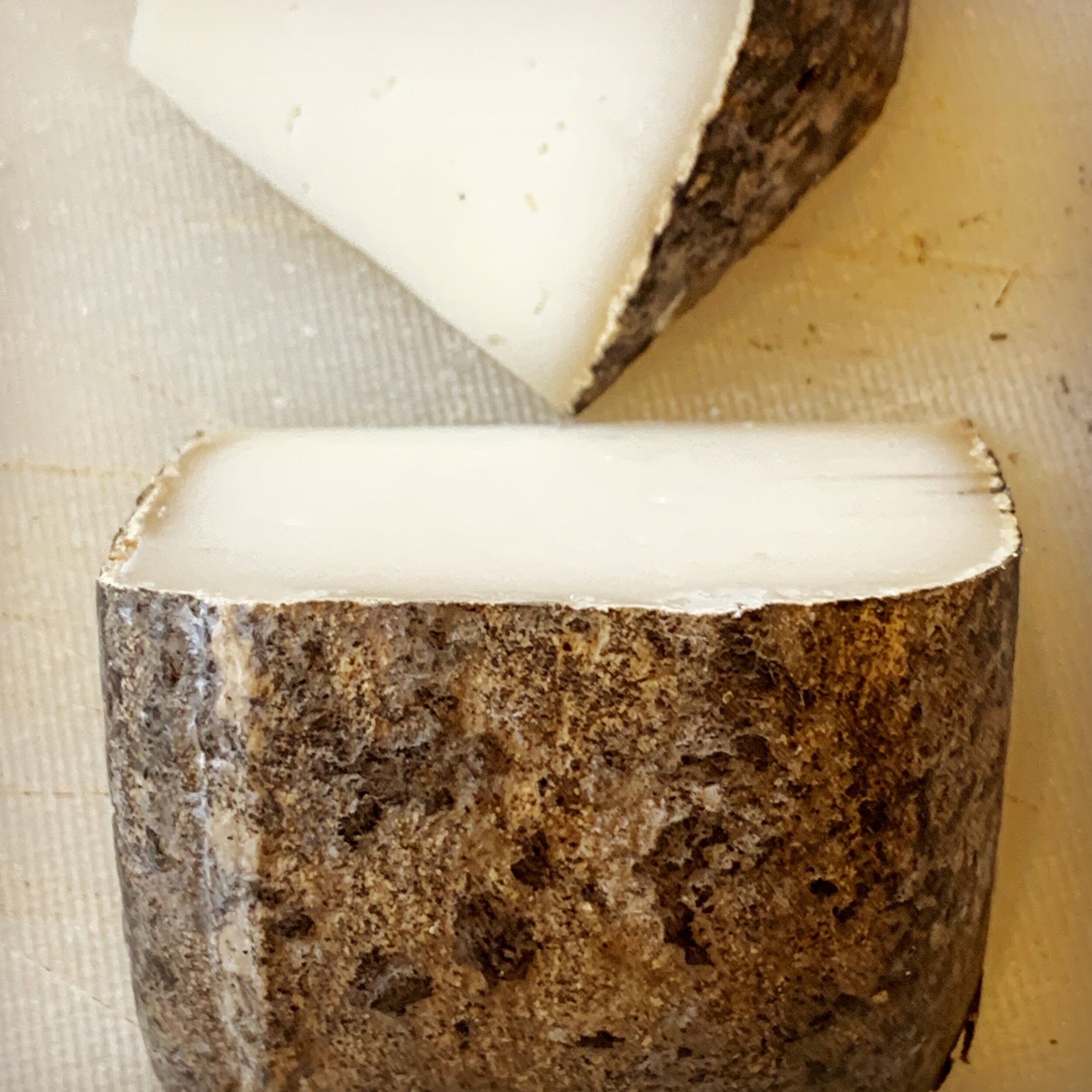No Kidding - Get to Know Goat Cheese!
To many people, goat milk cheeses are slightly sour logs of cheap, crumbly white clay, barely even worth calling ‘cheese’. Supermarket dairy cases are full of bad options, little more than bad-faith ambassadors of a cheese style worthy of so much more appreciation.
One of the main challenges goat cheese makers and retailers face is the general consumer’s lack of understanding of what makes goat cheese different. Without understanding the basics of how wheels made from goat milk differ from other mammal milk cheeses, it’s difficult to create an expectation of quality for consumers, thereby supporting the creation and consumption of better chèvre.
The first aspect of goat milk cheeses to consider is the milk itself. Considered to be the closest to human milk in structure, it is well-received by people with dairy allergies. Higher levels of medium-chain fatty acids make these cheeses easier to digest. Goat milk has less lactose (milk sugars) than cow milk, welcome news to those who suffer from lactose intolerance. Goat milk provides more protein per cup of milk than cow milk, more vitamins, and even more calcium. There’s a lot to like about goat milk.
A common complaint made of goat milk cheese is the ‘tang’ it can have, which can border on sour for some. Commercial cheeses and those made with low-quality milk and processing often emphasize that characteristic, making the cheese bland and unpleasant to eat. Another concern is the ‘animal’ aromas and flavors that can be found in some versions. Goat milk has higher levels of capric and caprylic acids, which can give off distinctive flavors and smells. These characteristics will diminish in products where the milk is aged or manipulated to varying degrees. Fresh goat milk will have prominent notes, but a wheel of aged Garrotxa from Basque Spain, less so. The time spent aging mellows these characteristics significantly.
Because goat milk is constituted differently than cow milk (or sheep milk, for that matter,) cheeses made from it tend to be softer. Overall, goats produce less milk per animal than cows. This has evolved into cheesemakers typically making goat milk cheese wheels smaller. Not only does that strategy allow the cheeses to be ready for sale and consumption sooner, but it also takes advantage of the milk’s brighter, livelier disposition.
Young wheels are fresh-tasting, with clean flavors of lemon and fresh milk. The Loire Valley in France offers turophiles some of the best examples of chèvre (French for “goat”) in the entire world. Valençay, the ash-rinded pyramid named for the eponymous village, is cakey and firm, with notes of lemon and mineral. Sainte-Maure de Touraine, with its straw through the center, is one of the most revered chèvres made. Selles-sur-Cher, Pouligny-Saint-Pierre, Chabichou de Poitou...the list goes on and all. All are exceptional representations of how amazing well-made goat cheese can be.
Great young chèvres are made outside France as well. In Piedmont, Italy, Robiola di Roccaverano DOP is a glorious example. Wrapped in chestnut leaves, this traditional cheese is moist and dense, with a sweet milk flavor that evolves into a creamy, earthy mouthfeel as it ages. In Vermont, Blue Ledge Farm’s Crottina is a simple and stunning button of young goat cheese and has been making people happy since it was first made in 2006.
Aged wheels of goat cheese do exist, however, and they present profiles that are sometimes even more approachable than their younger counterparts because of the extra time. When goat wheels are made with aging in mind, they are typically smaller than cow milk wheels.
This is partly because goats simply don’t yield the same quantity of milk per animal. A healthy dairy goat produces somewhere around 6 - 12 pounds of milk per day. A healthy cow makes almost five times as much. Since aging needs the wheel to have more volume to be able to ‘live’ through extensive aging, cheeses made with goat milk are usually smaller to accelerate the aging, making as much use of the original volume of milk as possible.
In Spain, Garrotxa is an aged cheese found in Catalonia. Rich and dense, with aromatic notes of grass and faint lemon, this cheese reflects the grassy foot of the Pyrenees where it is made. Versions of Gouda made from goat milk are heavy and loaded with amazingly caramelized flavors and that delightful crunch from tyrosine crystals found in similar cow milk versions. Pantaleo Sardo reflects the warm, sunny environs of its home on the island of Sardinia. Aged for three to six months, Pantaleo is sweet and floral with hints of citrus, making it an absolutely fabulous choice for shaving over grilled veggies or on a salad.
Years of bad experiences buying pre-packaged logs at supermarkets have set a bad example, certainly, but one or two (or three) bites of the good stuff will change your mind. The reality is well-crafted, artisan goat cheeses can be as soft and sunny, or as aged and mild, as one may care for. With no shortage of options from across the United States, and indeed the world, it’s time to give these amazing cheeses another try.

